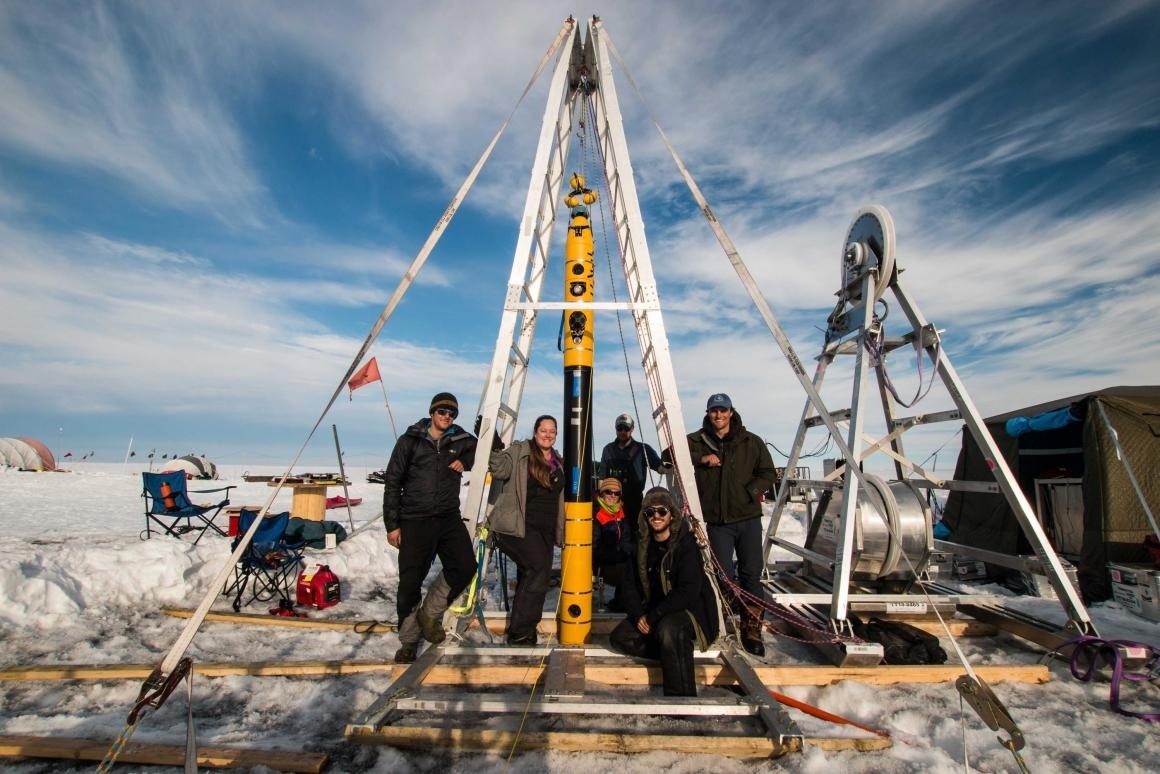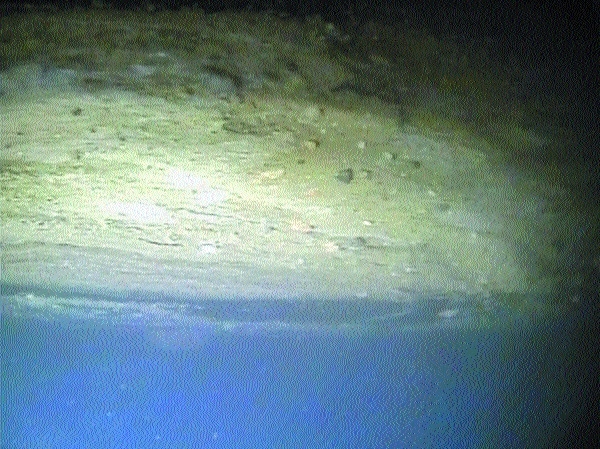Scientists snap first-ever images of ‘notorious’ Antarctic glacier’s foundation
| Date :03-Feb-2020 |

The team involved in the project using the Icefin autonomous underwater vehicle after its last deployment to the ocean
underside of Thwaites Glacier and (R) its grounding line .


NEW YORK :
According to scientists Thwaites glacier accounts for 4 pc of global sea-level rise
USING a robotic submarine, researchers have taken the first-ever images of the Antarctic Thwaites glacier’s foundations, a step towards better monitoring of the ice sheet which is notorious for its contributions to sea-level rise. According to the researchers, including those from Georgia Institute of Technology in the US, Thwaites accounts for about four per cent of global sea-level rise, causing concerns that a tipping point in its stability may result in a run-away collapse of the glacier, and boost sea levels by as much as 25 inches. A particular area of concern, visited by the robotic submarine, named Icefin, is a boundary called the grounding line between where the glacier rests on the ocean bed, and where it floats over water.
The scientists noted that this grounding line is important to the stability of Thwaites Glacier’s footing since the farther it recedes, the faster the ice can flow into the sea, pushing up sea-level. “Visiting the grounding line is one of the reasons work like this is important because we can drive right up to it and actually measure where it is,” said Britney Schmidt, a researcher from Georgia Institute of Technology, who is part of the project.
“It’s the first time anyone has done that or has ever even seen the grounding zone of a major glacier under the water, and that’s the place where the greatest degree of melting and destabilisation can occur,” Schmidt said. As part of the project, Icefin swam over 15 kilometres round trip during five missions, including two passes up to the grounding zone -- one where it got extremely close to the place where the seafloor meets the ice. “We saw amazing ice interactions driven by sediments at the line and from the rapid melting from warm ocean water,” Schmidt said. Scientists from across the world are working to analyse the data from this unprecedented mission, including seismic and radar measurements, to publish studies on the glacier, the researchers said. “We know that warmer ocean waters are eroding many of West Antarctica’s glaciers, but we’re particularly concerned about Thwaites.
This new data will provide a new perspective of the processes taking place, so we can predict future change with more certainty,” said Keith Nicholls, an oceanographer from the British Antarctic Survey. According to the researchers, the amount of ice flowing to the sea from Thwaites and its neighbouring glaciers has nearly doubled in the last 30 years. “While Greenland’s contribution to sea level has already reached an alarming rate, Antarctica is just now picking up its contributions to sea level,” Schmidt said.